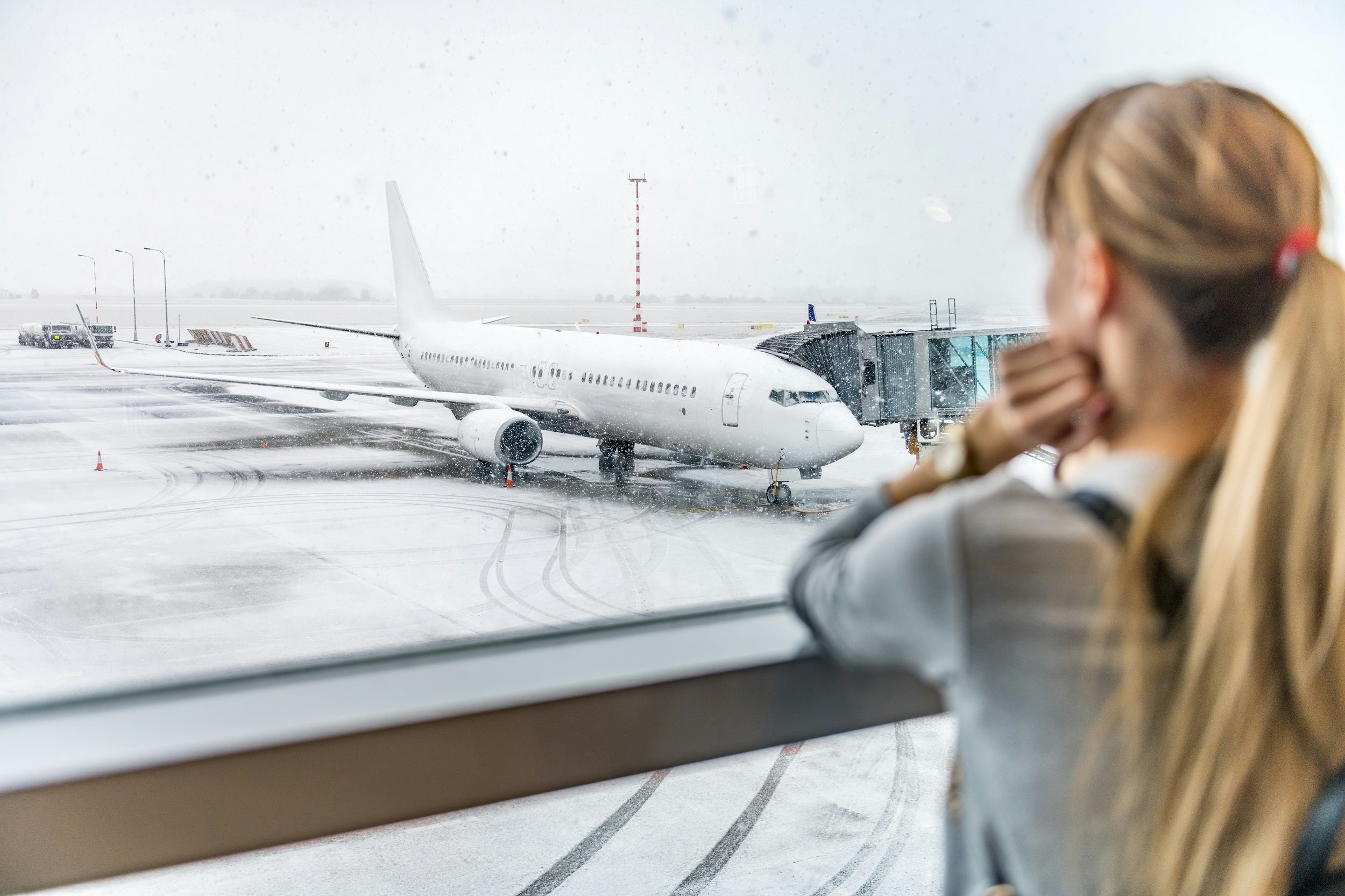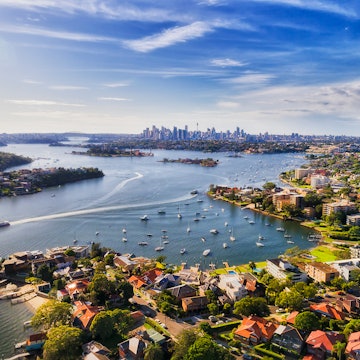

Air travel has a huge impact on the environment, but can flights ever become sustainable? © Orbon Alija / Getty Images
In 2019 a fresh sense of eco-anxiety and climate activism kicked off a wave of "flight shaming." Travelers around the world were beginning to come to grips with the heavy toll air travel was having on global carbon emissions. Campaigns like Flight Free UK and figures like Greta Thunberg helped raise awareness, but the aviation industry wasn’t going anywhere.
Prior to the pandemic, global passengers numbers were set to double by 2037. As the COVID-19 pandemic nearly ground air travel to a halt, lower carbon emissions might've been a silver lining to a very cloudy 2020. But as travelers begin to return to the skies, is it possible to achieve sustainable air travel?
Carbon offsetting
Carbon offsetting is nothing new, but now airlines are relying on it more than ever. The aviation industry has committed to "carbon-neutral growth" post-2020. The Carbon Offsetting and Reduction Scheme for International Aviation (CORSIA) is currently voluntary but from 2027 airlines will have to pay to offset any CO2 emissions that exceed 2020 levels. Air France, British Airways and JetBlue will start offsetting domestic flights this year, while easyJet already operates "net-zero carbon" flights.
Critics call CORSIA a "license to pollute." Why? Well, true offsetting isn’t easy. Altitude, aircraft age, empty seats and even the time of day you fly can all influence a flight’s emissions, but carbon calculators don’t always consider these factors, therefore what you offset may only be a fraction of the real output. In contrast, the success of projects funded by carbon offsets is often overestimated, and it’s hard to prove their "additionality," especially when an EU report claims 98% of offsetting schemes support projects that would have happened anyway.
Justin Francis, CEO of Responsible Travel told the BBC’s Victoria Derbyshire during a TV debate: "Things that sound too good to be true often are too good to be true. When we put carbon into the atmosphere it stays there for decades, hundreds, sometimes thousands of years – we can’t cancel that out with carbon offsetting. It’s a distraction from the real need, which is to reduce the amount of carbon we put into the atmosphere in the first place."

Electric planes
Cheaper, cleaner, quieter – electric aircraft have the potential to transform the way we travel and dramatically reduce the aviation industry’s carbon footprint. Aerospace engineers are busy developing the planes of the future, with easyJet hoping to run electric planes on routes under 311 miles (500km) by 2030 and Norway aiming to make all short-haul flights electric by 2040.
But there’s one big reason why we won’t be flying long-haul on rechargeable jumbos any time soon: the batteries are simply too heavy. Per kilogram, jet fuel contains around 30 times more energy than the best lithium-ion battery on the market – which means you need lots of them on board. And while conventional planes get lighter as they burn fuel (decreasing energy needs over the course of the flight), batteries don’t. Until this energy density problem is solved, seating capacity and flight range on electric aircraft will remain limited. Since 80% of the industry’s emissions come from flights over 1500km, electric aviation is decades away from cleaning up cross-continental trips.
In the meantime, hybrid planes, which reduce emissions by combining conventional fossil-fuel powered engines and electric motors, could become the norm. Airbus will begin testing its E-Fan X in 2021, with the hopes of flying a 100-passenger aircraft by the 2030s.

Sustainable aviation fuel
Sustainable aviation fuel (SAF) is perhaps the most promising immediate method of reducing aviation emissions. Made from crops, vegetable oils, wood chips or household waste, methods to produce it vary and some are more environmentally friendly than others.
So how does it work? SAF is made from materials that have already absorbed greenhouse gases from the atmosphere and replace fossil fuel, so while burning it in flight produces emissions like standard jet fuel, overall the CO2 emissions are reduced by around 80%.
"The main benefit of SAF is high-quality, more-sustainable fuels can be produced and used in today’s aeroplanes, rather than requiring new engines and planes to be developed. This is the most practical way of significantly reducing aviation emissions which contribute to global warming," Darran Messem, a sustainable development consultant, tells Lonely Planet.
Despite these benefits, of the 96 billion US gallons (363 billion litres) of jet fuel used globally in 2019, less than 1% were SAF. SAF is currently far more expensive than standard jet fuel and available in small quantities, so few airports offer regular distribution. But this won’t always be the case, says Darran.
"Emission reduction needs to be rewarded with a carbon price, which will enable production to increase, and the cost of SAF to fall. A position of cost-parity for sustainable and conventional jet fuel in commercial quantities should be reached within the current decade. This will provide an enormous incentive for airports and airline operators to switch to SAF."

Low-waste flights
The International Air Transport Association (IATA) says that airline passengers generated over 7.3 million tons of cabin waste in 2018 alone. The key culprit is plastic. From plastic-wrapped blankets and disposable toothbrushes to single-use cutlery and non-compostable coffee cups, there’s a lot to tackle.
But change is coming. The world’s first single-use plastic-free flight took off in 2018 and HiFly now runs all of its flights without single-use plastic. Ryanair has pledged to become plastic-free by 2023 and other airlines including Etihad, Qantas and Air New Zealand have plans to significantly reduce the amount of waste they send to landfill.
Airports are also investing in on-site waste management plants which convert waste food and packaging into energy. Dubai banned all single-use plastics from their airports’ cafes and restaurants in early 2020, while half of India’s airports were declared free of single-use plastic in 2019. San Francisco airport aims to become the first zero waste-to-landfill airport by 2021.

Non-stop vs direct flights
If you must fly, direct is usually best for the environment. Takeoffs and landings guzzle a lot of fuel, making multi-stop journeys the worst offenders.
So with the dawn of ultra long-haul flights such as Qantas’ London to Perth route and its anticipated "Project Sunrise" connecting Sydney with New York, London and Paris (due in 2023), can we really expect to fly halfway around the world while boasting a lower carbon footprint?
Unfortunately not. Ultra long-haul flights require a lot more fuel to go the distance, which makes the plane heavy, which burns even more fuel. Plus, they’re often aimed at premium travellers; Singapore Airlines’ 19-hour flight between Singapore and Newark only carries business and premium economy passengers, which equates to around 90 fewer seats than its standard A350-900s – bad news for the planet.

Eco-tax
In theory, adding climate taxes to the cost of airline tickets could reduce demand for flights and raise money for improving greener transport options such as railways and cycle schemes. Sweden introduced charges ranging from €6 to €39 in 2018, France launched its own eco-tax in 2020 and Germany, Switzerland and the Netherlands are likely to follow suit soon.
But there are critics on both sides of this political hot potato: airlines claim they want to be part of the solution, not punished with levies, while environmental campaign groups want higher taxes, and argue that only when plane tickets reflect the real environmental cost will there be enough incentive for airlines to innovate and reduce emissions faster.
What you can do
- Avoid unnecessary flights, take alternative transport if possible and if you do choose to offset, ensure you donate to an accredited scheme such as Climate Care, Terrapass or Atmosfair.
- Pick airlines with modern, fuel-efficient fleets. Skyscanner’s greener choices search tool highlights flights with lower emissions.
- Bring your own reusable items on board such as a water bottle, travel mug, bamboo cutlery and headphones.
- Avoid ultra-long-haul and short hops, and always fly economy. Stretching out in business and first class might be bliss, but luxury comes at a cost: the carbon footprint of these space-hogging seats can be up to six times higher than those in economy.
- Write to your local government representative about cleaner, greener transport options and use your vote to elect candidates who care about the environment.
You might also like:
How to reduce your use of plastic on a trip
A sustainability expert’s guide to zero-waste travel
I'm a Lonely Planet writer and I gave up flying. Here's what happened
This article was originally published February 2020. It was updated February 2021.














